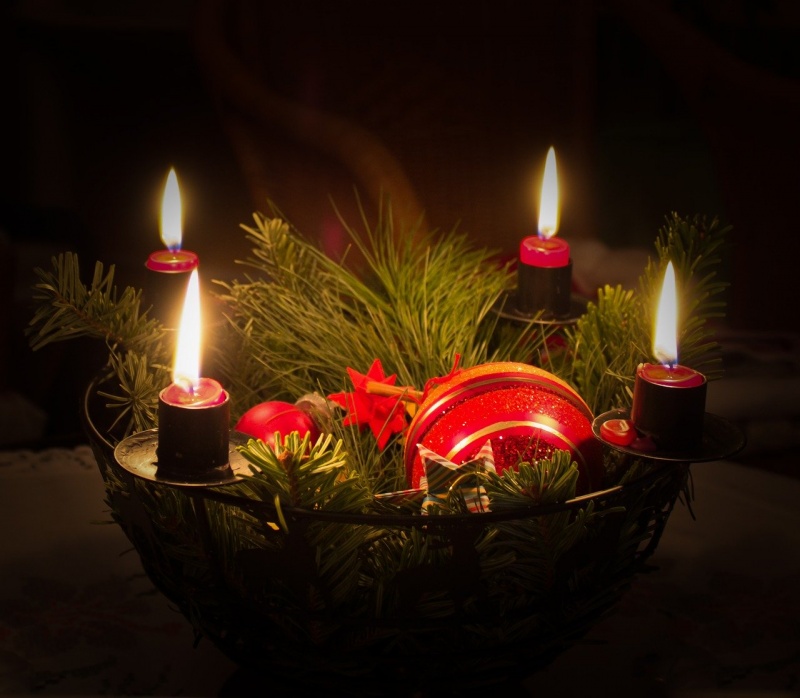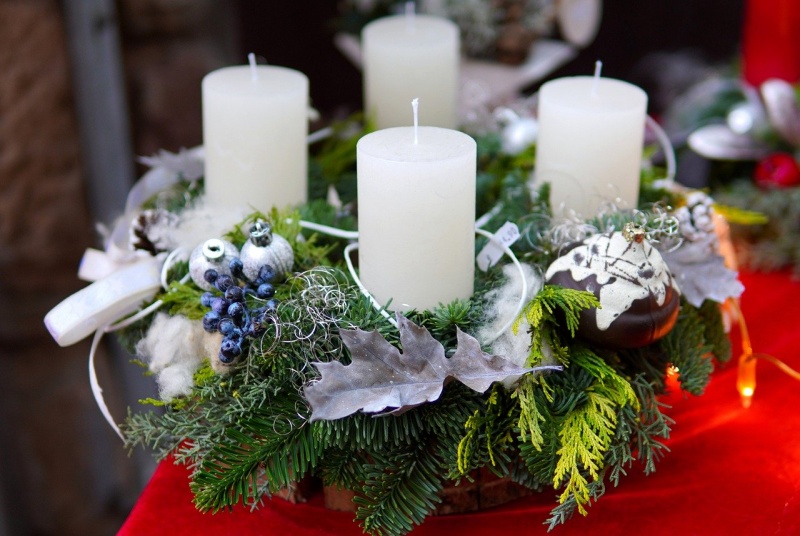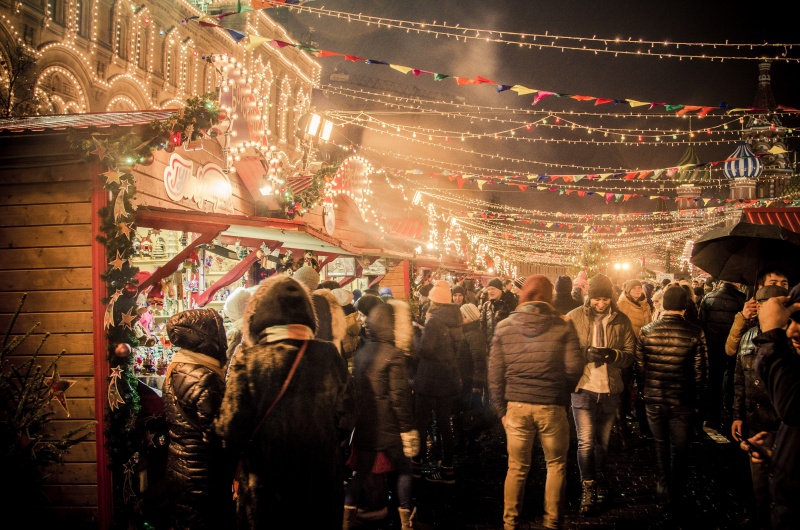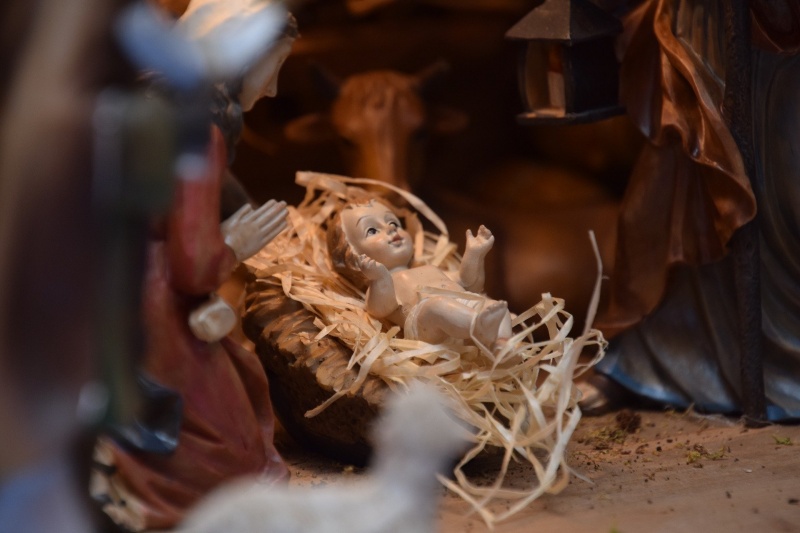
THE BEAUTY OF TRADITION
When Johann Hinrich Wichern, an evangelical pastor and teacher, and his pupils lit the first Advent candle placed on a wooden wheel hanging in the common room of their orphanage in Hamburg 180 years ago, he could not have known that this was the beginning of a custom that would cross the walls of the orphanage, city and even Germany and become one of the most popular Advent traditions in Europe. The symbolism and appearance of the wreath of Fr Wichern, which was to give his charges a taste of family warmth and to arouse a prayerful mood in anticipation of Christmas, caught on to such an extent that the wreath became a permanent item in homes and churches, not only of evangelists but also Catholics. It reached Poland in the 1920s - in 1925 the citizens of Wrocław began to cultivate this tradition. Very slowly, wreaths began to appear in other regions of our country, more distant from the western border. In Hungary, the Advent wreath was popularized much earlier than in Poland, but now, contrary to our country, this tradition is beginning to wane.
Why did the idea of the German pastor turn catch on so readily? It seems that Christians of various denominations were captivated by its symbolism and simple beauty. Four candles are placed on a circle made of spruce twigs, symbolising peace, faith, hope and love, which are lit one after the other on successive Advent Sundays. The green of the twigs symbolizes life, the light of the candles - the coming Light (the Son of God), its round form - the recurring cycle of life. In churches, the wreath accompanies services, and at home it is witness to prayers, meals and family gatherings. Candles lit consecutively count down the time to Christmas, for adults it flows disturbingly fast, and for small children - dreaming of a Christmas tree - it is definitely too slow.
In the past in Hungary, the individual weeks of December had their own names. The first one was called paper, the second one brown, the next one silver, and the last one before Christmas Eve was called gold. In the golden week came the time for the last pre-Christmas touch-ups and the purchase of the Christmas tree. Today, when the pace of life in Hungary, just like in Poland, has increased a lot, old traditions are forgotten. Instead, however, new ones are created, such as street decoration and illumination and Christmas markets (just like the Advent wreath and Christmas tree this tradition is also an "import" from Germany, where such fairs have been organized since the 14th century).

SLOW DOWN
It is not easy not to stay focused on the essence of Advent, being an adult, who, before Christmas has to deal with cleaning, major shopping, preparing the Christmas menu, thinking up gifts for family and friends, sending wishes and who still has a duty to endure smiling a Christmas Party at a company which is bursting at the seams with work to be done, as the year has to be closed. It is not easy for the children, constantly nagged to tidy up because Christmas is right around the corner and to study, because the end of term is near; during Advent they mainly think about Christmas gifts and the forthcoming school break. From November and here and there even from October, everyone - large and small – is assailed by Christmas exhibitions and decorations, accompanied by the sound of English-language songs in which you won't hear a word about little Jesus,. Christmas and Advent turns into a great festival of consumption. How does one slow down in this whirlwind of activities and stimuli? How can we focus on the joyful experience of waiting for our Saviour’s birth?

Since the 4th century, when Christmas began to be celebrated, the Church has been encouraging the faithful to prepare for the coming of the Lord Jesus Christ in two dimensions: first, the celebration of the holyday itself, and second, the coming of Christ at the end of time. It is a time of joyful expectation, but with a reflexive dimension. Advent is celebrated in Catholic and Evangelical Churches, which try to help the faithful to experience it fully and in silence. The evangelists are invited to a week-long Advent service. In the Catholic Church, Advent retreats are held, morning Rorate masses or Lauds are celebrated in some temples. This is a good time for confession and regular reading of the Scripture, and even for fasting for a chosen intention.

HELPERS
Accompanying children can be a great help for a personal, good Advent experience. Children need help, so it's a great idea to prepare your own Advent calendar for a good start, instead of buying a chocolate ready-made one. In the windows of your home calendar you should hide not only small chocolates or candies but also tasks to be done, such as baking gingerbreads, writing a letter to Santa Claus or getting information about Christmas traditions. Performing tasks is completely different than eating chocolate. In many homes at the threshold of Advent, the Crib of Good Deeds appears. At first it is completely empty, but every household member can put a blade of hay into it when they do something good. On December 24th, the crib, through the efforts of the whole family, should be softly lined to receive the Babt. Other families write letters to Baby Jesus, thanking him for the gifts received in a given year and asking for graces for the new year, or experience Advent with the saints, teaching their children about the characters that are mentioned in the liturgical calendar at that time. There are many ideas, and the truth is that each one of them, done together with the child, also prepares the parents for a better Christmas experience.

Advent is a good time to give something of yourself to those who are not successful in life and need help. There are more and more well-thought-out and structured efforts to ensure that those in need receive real help and that donors can be sure that their efforts and resources make sense. Participation in the collection of products for poor families and finances for missions, but also the help provided to a grandmother or an elderly neighbour who needs to vacuum the carpets, clean the windows or read a book, is for many people a way out of the trap of consumerism and the constant lack of time.
***
In order to experience Advent well, you have to want and put an effort into it. Prepare a wreath (even when the second Sunday of Advent is already gone), or at least put a Scandinavian electric Advent candlestick in a window, which also has its symbolism and charm. Help an older auntie with Christmas cleaning. Bake gingerbread for gifts. Walk with your family or friends along an illuminated streets of a city and eat hot chestnuts or a slice of bread with lard at a Christmas market. Sit down in the evening with Scripture or other spiritual text. Take the children to Rorate Masses. Make room within yourself for the new-born Jesus. It is worth it. It really is

Marta Dzbeńska-Karpińska
Autorka jest z wykształcenia politologiem i fotografem, redaktorką portalu wrodzinie.pl
